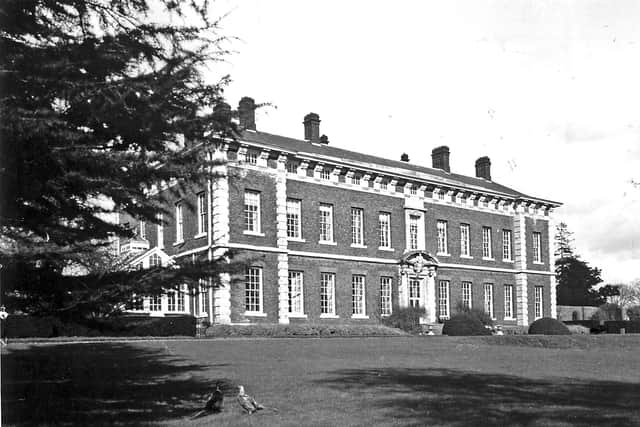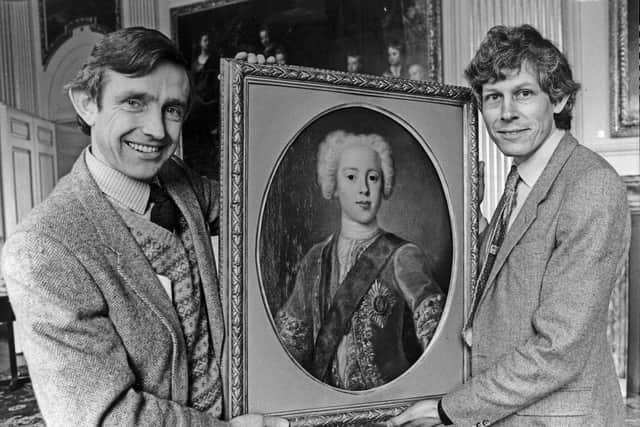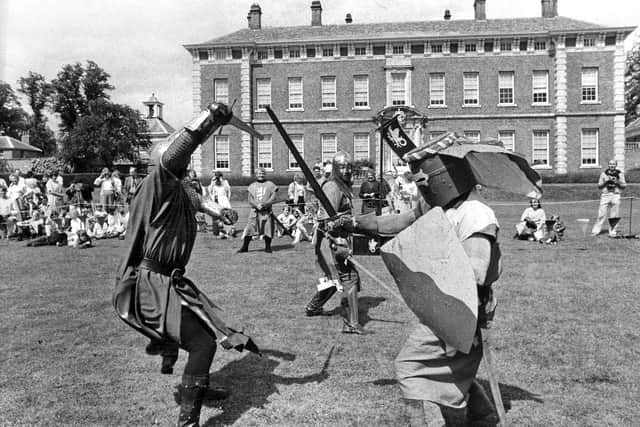Beningbrough Hall: The Yorkshire country house which hosted hunts and high society parties
John Bourchier built the red brick Beningbrough Hall with architectural details in stone around 1716. Very little is known about its building history other than the work was supervised by York carpenter/architect Wiliam Thornton.
Whilst advice on the more Italianate of Beningbrough’s features was possibly given by amateur gentleman British architect, Thoms Archer, there is a strong supposition that John Bourchier himself influenced the house’s overall Baroque design. Ownership of the house eventually passed down to the Dawnay family.
Advertisement
Hide AdAdvertisement
Hide AdAt the outset of the 20th century, Beningbrough Hall was occupied by Lieutenant-Colonel Lewis Payn Dawnay. Born in 1846, he succeeded to the extensive Beningbrough estates on the death of this uncle.


In 1877, he married Lady Victoria Elizabeth Grey, daughter of General the Hon. Charles Grey. At one time, she was Lady-In-Waiting to Queen Victoria. L.P. Dawnay served in the Coldstream Guards, retiring as Lieut-Colonel.
He was the last member of parliament for Thirsk 1880-1885 and first member for Thirsk and Malton, North Riding Yorkshire 1885-1892. In 1905, he was elected to the York and Ainsty Hunt committee. The Hunt often met at Beningbrough Hall.
A number of prominent individuals were guests at the house during the Edwardian period. On October 28, 1905, Princess Henry of Battenberg and Princess Eugene arrived there. The Dawnays often entertained guests at their house parties during York Race meetings. Lady Victoria was described as ‘one of the most popular and charming of Yorkshire hostesses’.
Advertisement
Hide AdAdvertisement
Hide AdUnder L.P Dawnay the house and its surroundings were improved, including adding the Conservatory and New Service Wing, remodelling the forecourt; installing electricity and modernising the farm buildings. Family members involved themselves in a number of activities at Beningbrough.


Amongst these were skating on the pond in winter, cricket in the summer, putting on theatrical performances in the great Hall and crazily tobogganing down the Main Staircase on tea trays.
L.P. Dawnay died at Brighton on July 30 1910 and his successor was his eldest son Major Guy Dawnay. He was 32 and by this time and had left the army to become a merchant banker.
A supporter of the National Trust, he was friendly with its secretary Nigel Bond and had supported an appeal for funds in 1906.
Advertisement
Hide AdAdvertisement
Hide AdRecalled by the Army in 1914, Guy Dawnay took the decision to instruct Sir Howard Frank, of Knight, Frank and Rutley to put up Beningbrough Hall and estate for auction on November 14, 1916. For a time, there were rumours that the house might be pulled down.


His decision to sell may have been in order to pay the final amounts on his father’s death duty; his wife did not care for Beningbrough; and his work dictated he had to be in the London area.
The sale notice mentioned the following about Hall’s interior: Entrance Hall about 40ft square and 40ft high; second hall with magnificent old oak staircase (dated 1716); a handsome suite of seven reception rooms, bathroom and about 30 bed and dressing rooms. It said, the estate comprised some excellent Partridge Ground and the coverts extended to 250 acres.
There were 48 farms and small holdings and the villages of Shipton and Beningbrough.
Advertisement
Hide AdAdvertisement
Hide AdThe property was purchased by W.A. Tower, Littleport, Cambridgeshire for £137,000. Later, it was put up in lots and most of it was said to have sold at good prices.
The Countess of Chesterfield, daughter of wealthy ship owner, Charles Wilson of Hill, eventually bought the Hall, Home Farm and Park comprising approx. 375 acres for £15,000.
Her husband, Edwyn, 10th Earl of Chesterfield, more than twice her age, had held posts in the Royal household. They moved to Beningbrough Hall in July 1917.
Transforming the Hall and adapting it to their personal, lavish taste with pictures, furnishings and carvings, it became a great period of restoration for the property. Lord Chesterfield spent much of his time in London leaving his wife in the north. They had no children.
Advertisement
Hide AdAdvertisement
Hide AdIt was announced in August 1919 that the Countess of Chesterfield had won all before her with her six-year-old chestnut gelding The Clown and succeeded in carrying off the championship prize for the best hunter at the show at Northallerton. Then it was added: ‘Her Ladyship will again hunt from Beningbrough Hall, York where she has gone in for breeding horse and cattle and a country life generally’.
In April 5, 1924 it was commented that the field which turned out with the Ainsty Hunt several days earlier, when the fixture was at Beningbrough Hall, was the biggest seen for many years.
The Earl and Countess of Chesterfield provided old fashioned hospitality for all comers. Amongst the guest to arrive at Beningbrough during that year was the Earl of Cavan who was visiting Yorkshire on military duty.
At a Beningbrough house party at the time of the York races in 1928, the Earl of Durham was staying there. It was also mentioned that the Earl and Countess of Chesterfield ‘always have a large number of people for the two York meetings’.
Advertisement
Hide AdAdvertisement
Hide AdThe Countess of Chesterfield held a successful gymkhana and garden party on Saturday August 20, 1932. The event which was organised on behalf of the local Nursing Association was well attended.
A programme was arranged and attracted entries from young riders from the county and the children of farmers from the neighbourhood.
The Earl of Chesterfield died in 1933 in his 79th year. His obituary revealed that he was once credited with being the best-groomed man in Society. He had served under William Ewart Gladstone as Treasurer of the Queen Victoria’s Household between 1892 and 1895.
Beningbrough Hall was requisitioned by the RAF during WWII, becoming host to airmen stationed at the Linton-on-Ouse base. During this time many of the house’s contents were put in storage and the Countess of Chesterfield retreated to Home Farm. She did not return to the Hall until 1947.
Advertisement
Hide AdAdvertisement
Hide AdAn announcement in June 1958 said that Beningbrough Hall had been accepted by the Treasury in settlement of estate duty that was payable on the death – in November 1957 – of the Countess of Chesterfield at a charge to the National Land Fund of £29,250.
The Hall was to be transferred to the National Trust who hoped to find a tenant to take the house and the Home Farm of some 300 acres. A report added: ‘The Hall will in due course be opened to the public.’
A four-day sale of most of the Hall’s contents took place only months after the Countess of Chesterfield’s death.
The National Trust only had limited funds to buy items because it was felt they mainly belonged to the Chesterfields and did not have any special long association with the house. The cost of the items purchased amounted to £10,000 which came from the National Land Fund.
Advertisement
Hide AdAdvertisement
Hide AdThe National Trust’s motto is ‘Forever, for everyone’. It is a charity founded in 1895 by three people who saw the importance of the nation’s heritage and open spaces and wanted to preserve them for everyone to enjoy.
Over 125 years later, these values are still at the heart of everything they do. The National Trust looks after special places throughout England, Wales and Northern Ireland.
This includes 775 miles of coastline, over 248,000 hectares of land, over 500 historic houses, castles ancient monuments gardens and parks and nature reserves.
Beningbrough Hall first opened to the public with a curator installed in in 1961 but struggled financially until the mid-1970s when a decision was taken to transform the house into a major tourist attraction.
Thanks to Beningbrough Hall staff for help with this piece.
Comment Guidelines
National World encourages reader discussion on our stories. User feedback, insights and back-and-forth exchanges add a rich layer of context to reporting. Please review our Community Guidelines before commenting.